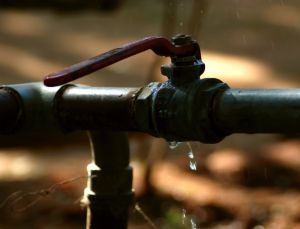Know your house
This might seem silly, but not everyone knows their own house well enough, especially if they take minimal part in the house maintenance. Ask yourself this question:
– Do you know where your main water shut-off valve is?
Solve the problem with backup power
When every other thunderstorm leaves you without power for 10 hours, it significantly disrupts your lifestyle. You know what we mean if you live in an older house. The good news is you don’t have to wait in the darkness until the power comes back on. Take matters in your own hands and install a backup power generator. Choose a portable unit or a stand-by one that will automatically kick in once it detects the power outage.
Remember, once the power is out your sump pump also stops working. If this is a concern, choose a stand-by power generator or install a backup sump pump. Depending on where you live, you can opt either for a battery-powered option or the one that runs off of water pressure.
Be prepared
Unfortunately, none of us is safe from plumbing misfortunes, but it always helps to be prepared. Have a plumber’s number (here’s ours: 410-437-3888) in your phone or pinned to your fridge or cork-board, so that every panic-stricken family member knows where to call in case you need an urgent drain cleaning.
Also, don’t skip on maintenance. Water heaters, sump pumps and even pipes are not meant to last forever. Such factors as your location, lifestyle, water chemistry and many others can positively or negatively affect the lifespan of your plumbing equipment. Don’t wait till it breaks: get things checked out and tuned up every once in a while – Chesapeake Plumbing will gladly help you with that!
An overflowing toilet, a burst pipe or a malfunctioning faucet is a plumbing emergency that requires your immediate attention. What do you do? First of all, don’t panic and follow these steps recommended by the specialists from Chesapeake Plumbing.
Shut off the water. If you can, shut off the water supply to the pipe that’s causing an issue, but if you don’t know your way around your plumbing system, just turn the main water shutoff valve. It’s typically located in the basement or outside your house. It’s a good idea to get familiar with the plumbing before the emergency occurs. Label the pipes and valves so that they can be easily identified.
Contain the damage. Once there’s no more water contributing to the flood, attempt to contain the disaster area. Prevent the water pooling on the floor from spreading any further by piling towels, blankets, scooping it out or directing to the drains.

